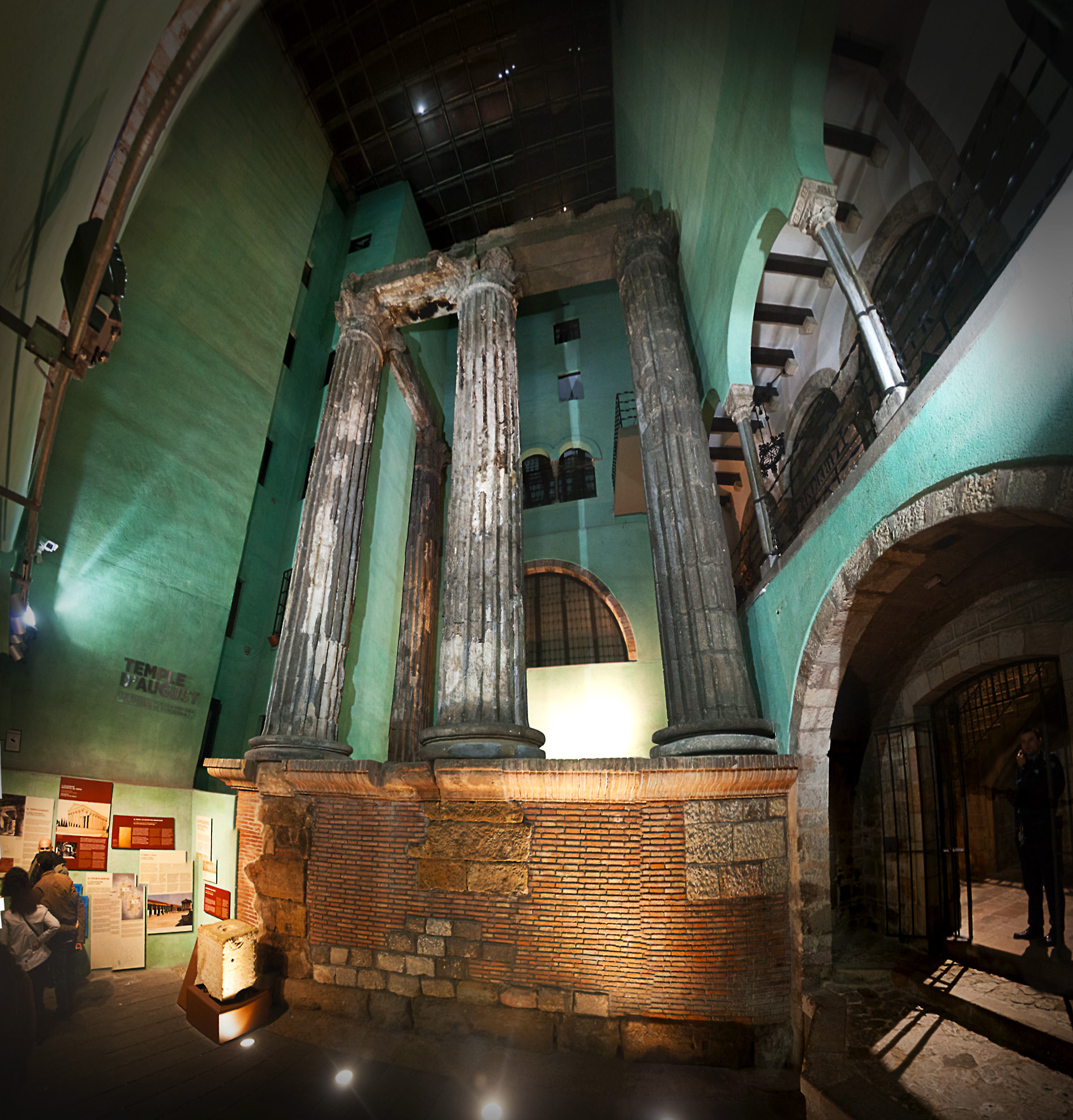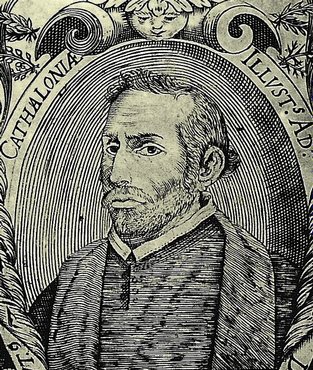|
Carrer De Pau Claris, Barcelona
Carrer de Pau Claris is a street in Eixample, Barcelona. It crosses the district grid perpendicularly to the seafront, between Passeig de Gràcia and Carrer de Roger de Llúria. It starts in Avinguda Diagonal and ends in Plaça Urquinaona, where it becomes Via Laietana. It's the second busiest one-way street in the Eixample district. It's named after the Catalan political leader Pau Claris i Casademunt, who proclaimed the Catalan Republic in 1641. Transport Metro * Urquinaona ( L1, L4) * Passeig de Gràcia ( L2, L3, L4) See also *History of Barcelona *Ildefons Cerdà Ildefons Cerdà i Sunyer (; es, Ildefonso Cerdá Suñer; December 23, 1815, Centelles – August 21, 1876, Caldas de Besaya) was a Spanish urban planner and engineer who designed the 19th-century "extension" of Barcelona called the ''Eixampl ... * List of streets and squares in Eixample {{coord, 41.3935, N, 2.1660, E, source:wikidata, display=title Streets in Barcelona Eixample ... [...More Info...] [...Related Items...] OR: [Wikipedia] [Google] [Baidu] |
Eixample
The Eixample (; ) is a district of Barcelona between the old city ( Ciutat Vella) and what were once surrounding small towns ( Sants, Gràcia, Sant Andreu, etc.), constructed in the 19th and early 20th centuries. Its population was 262,000 at the last census (2005). Architecture and design The Eixample is characterized by long straight streets, a strict grid pattern crossed by wide avenues, and square blocks with chamfered corners (named ''illes'' in Catalan, ''manzanas'' in Spanish). This was a visionary, pioneering design by Ildefons Cerdà, who considered traffic and transport along with sunlight and ventilation in coming up with his characteristic octagonal blocks, where the streets broaden at every intersection making for greater visibility, better ventilation and (today) some short-term parking areas. It also provided an area for horse-drawn wagons and carriages to easily turn around. The grid pattern remains as a hallmark of Barcelona, but many of his other provisio ... [...More Info...] [...Related Items...] OR: [Wikipedia] [Google] [Baidu] |
Urquinaona Metro Station
Urquinaona is a station in the Barcelona Metro network, served by TMB lines L1 and L4. One of the metro stations in the city centre, and one of the busiest, it's located underneath '' Ronda de Sant Pere'' and ''Via Laietana'', next to '' Plaça Urquinaona'' - after which it is named - in the Eixample. It can be accessed from ''Plaça Urquinaona'' and ''Via Laietana''. The part of the station serving line L4 was opened in 1926 as part of what was then line 3, as a part of the stretch between Passeig de Gràcia and Jaume I. The stretch was later extended to Barceloneta, and in 1973 was made a part of L4. The line L1 platforms were opened in 1932, as a part of the section between Catalunya and Arc de Triomf section. The L1 platforms are oriented from west to east and is located under ''Ronda de Sant Pere''. They have three vestibules, two at the eastern side (''Plaça Urquinaona'') and one at the western side. The transfer to L4 is made through the eastern vestibule, which also se ... [...More Info...] [...Related Items...] OR: [Wikipedia] [Google] [Baidu] |
List Of Streets And Squares In Eixample
This is a full list of streets and squares in L'Eixample, a district of Barcelona, Catalonia, Spain. List A * Aldana, d' * Alí Bei, d' * Almogàvers, dels * Anaïs Napoléon, jardins d' ( Anaïs Napoleón) * Aragó, d' * Aribau, d' * Arts, plaça de les * Ausiàs Marc, d' B * Bailèn, de * Balmes, de * Batlló, passatge de * Beatriu de Provença, jardins de * Bergara, de * Bocabella, passatge * Bofill, passatge de * Bosquet dels Encants, jardins del * Bruc, del * Buenos Aires, de C * Calàbria, de * Camps Elisis, passatge dels * Canonge Cluffí, passatge del * Caputxins, passatge dels * Carlit, jardins del * Cartagena, de * Casanova, de * Casp, de * Catalunya, plaça de * Catalunya, rambla de * Centelles, passatge de * Cèsar Mantinell, jardins de * Cinc d'Oros, plaça de * Clotilde Cerdà, jardins de * Coll del Portell, passatge de * Comte Borrell, del * Comte d'Urgell, del * Concepció, passatge de la * Consell de Cent, del * Constança d'Aragó, jardins de * ... [...More Info...] [...Related Items...] OR: [Wikipedia] [Google] [Baidu] |
Ildefons Cerdà
Ildefons Cerdà i Sunyer (; es, Ildefonso Cerdá Suñer; December 23, 1815, Centelles – August 21, 1876, Caldas de Besaya) was a Spanish urban planner and engineer who designed the 19th-century "extension" of Barcelona called the ''Eixample''. Because of his extensive theoretical and practical work, he is considered the founder of modern town planning as a discipline, having coined the word "urbanization". Biography Cerdà was born in Centelles, Catalonia, Spain, in 1815. He trained as a civil engineer at the ', in Madrid. He joined the Corps of Engineers and lived in various cities in Spain before settling in Barcelona in 1848 and marrying Clotilde Bosch. After the death of his brothers, Cerdà inherited the family fortune, and left the civil service. He became interested in politics and the study of urban planning. When the government of the time finally gave in to public pressure and allowed Barcelona's city walls to be torn down, he realized the need to plan the cit ... [...More Info...] [...Related Items...] OR: [Wikipedia] [Google] [Baidu] |
History Of Barcelona
The history of Barcelona stretches over 2000 years to its origins as an Iberian village named ''Barkeno''. Its easily defensible location on the coastal plain between the Collserola ridge (512 m) and the Mediterranean Sea, the coastal route between central Europe and the rest of the Iberian peninsula, has ensured its continued importance, if not always preeminence, throughout the ages. Barcelona is currently a city of 1,620,943, the second largest in Spain, and the capital of the autonomous community of Catalonia. Its wider urban region is home to three-quarters of the population of Catalonia and one-eighth of that of Spain. Origins The origin of the earliest settlement at the site of present-day Barcelona is unclear. Remains from the Neolithic and early Chalcolithic periods have been found on the coastal plain near the city. The ruins of an early settlement have been excavated in the El Raval neighborhood, including different tombs and dwellings dating to earlier than 500 ... [...More Info...] [...Related Items...] OR: [Wikipedia] [Google] [Baidu] |
Barcelona Metro Line 2
Barcelona ( , , ) is a city on the coast of northeastern Spain. It is the capital and largest city of the autonomous community of Catalonia, as well as the second most populous municipality of Spain. With a population of 1.6 million within city limits,Barcelona: Población por municipios y sexo – Instituto Nacional de Estadística. (National Statistics Institute) its urban area extends to numerous neighbouring municipalities within the and is home to around 4.8 million people, making it the [...More Info...] [...Related Items...] OR: [Wikipedia] [Google] [Baidu] |
Barcelona Metro Line 4
Line 4, also known as Trinitat Nova – La Pau, usually called "línia groga" (yellow line), is a line in the Barcelona Metro network operated by TMB, and part of the ATM fare-integrated transport network. It serves the northern districts of the city, and it is being extended to the new major metro and rail stations Estació de la Sagrera and Sagrera-Meridiana. Overview Opened to the public in 1973, it serves the northern half of Barcelona using part of the infrastructure of Barcelona's first metro line the '' Gran Metro de Barcelona'', covering a wide C-shaped area stretching from La Pau (in la Verneda) to Trinitat Nova, where it is linked with the recent L11. The 16.7 kilometres that make up the whole line are underground. Although in 1966 it was planned for line 4 to be a loop line connecting Trinitat Nova and La Pau stations with three intermediate stations, in 1974 the plan was subsequently changed such that it became a C-shaped line of today, with provisions for two ... [...More Info...] [...Related Items...] OR: [Wikipedia] [Google] [Baidu] |
Barcelona Metro Line 1
Line 1, shortened to L1, coloured red and often simply called ''Línia vermella'' ("Red Line"), is the second oldest Barcelona Metro line, after line Barcelona Metro line 3, L3. It is the longest line of the Barcelona Metro, and links L'Hospitalet de Llobregat and Santa Coloma de Gramenet. Originally operated by the independent Ferrocarril Metropolitano Transversal de Barcelona, it is today operated by Transports Metropolitans de Barcelona (TMB) and is part of the Autoritat del Transport Metropolità, ATM fare-integrated main transport system. L1 is the only metro line in Spain to use Iberian gauge tracks, as used by most Spanish main line railways. The line was created in 1926 as a means to join the rail stations the city had in the 1920s, and in preparation for the 1929 Barcelona International Exposition, 1929 Universal Exposition. It has been growing since then to become, as of 2007, a large line made up of 30 stations, the network's busiest. These stations are architecturall ... [...More Info...] [...Related Items...] OR: [Wikipedia] [Google] [Baidu] |
Catalan Republic (1641)
The Catalan Republic ( ca, República Catalana, ) was a short-lived independent state under French protection proclaimed in 1641 by the States-General of Catalonia led by Pau Claris, during the Reapers' War. The States-General of Catalonia, headed by the President of the Deputation of the General of Catalonia (or Generalitat) Pau Claris, proclaimed the Catalan Republic on 17 January 1641. On 23 January 1641 the ''Braços Generals'' led by Pau Claris proclaimed Louis XIII of France as Count of Barcelona, putting the Principality of Catalonia under French sovereignty. Louis XIII was succeeded upon his death in 1643 by Louis XIV (the 'Sun King'), who remained Count of Barcelona until 1652, when Catalonia was reincorporated into the Spanish Monarchy. History During the Reapers' War which started in 1640 (and included as a part of the Franco-Spanish War) the States-General of Catalonia ( ca, Junta de Braços or ), an extraordinary council of representatives of the Catalan Cour ... [...More Info...] [...Related Items...] OR: [Wikipedia] [Google] [Baidu] |
Barcelona
Barcelona ( , , ) is a city on the coast of northeastern Spain. It is the capital and largest city of the autonomous community of Catalonia, as well as the second most populous municipality of Spain. With a population of 1.6 million within city limits,Barcelona: Población por municipios y sexo – Instituto Nacional de Estadística. (National Statistics Institute) its urban area extends to numerous neighbouring municipalities within the and is home to around 4.8 million people, making it the [...More Info...] [...Related Items...] OR: [Wikipedia] [Google] [Baidu] |






